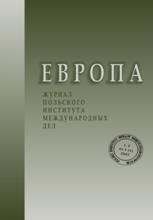

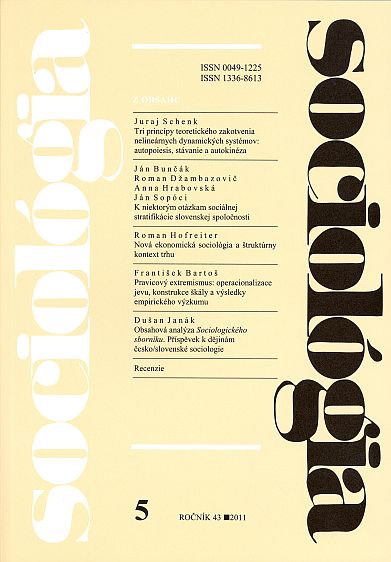
Keywords: social stratification; social class; EGP class scheme; International Socio-Economic Index of Occupations (ISEI); subjective placement in the stratification system of society
On some Questions of Social Stratification in Slovak Society. The present study deals with the following groups of questions regarding changes in the social stratification system in Slovak society: 1.How has the social stratification system changed? Which of the classes has more members and which of them less? How do they differ? How has the relationship between gender and social status changed? 2. Do class members differ in their values, attitudes, needs, beliefs and lifestyles? Are these classes potential social classes with specific characteristics and features, making possible to create a class identity? The analysis is based on the results of social stratification research in Slovakia in 1993 – 2010. The theoretical basis was the Goldthorpe EGP class scheme. The first group of questions can be answered as follows: during the last twenty years the vertical social order has changed. The highest level – the level of service class, which includes higher-grade professionals and managers – was joined with the category of economically independent individuals, the category with the biggest increase of members. The most dramatic decrease of members was in the category of skilled manual workers. The long-term decrease in the proportion of agricultural workers continues. The differentiation between EGP classes is bigger and the income is not the only significant aspect. There is still a strong gender differentiation in social status; gender has a stronger impact on the amount of income than does EGP class. The answer to the second question is: members of the three EGP classes have different opinions on some of the basic economic issues and how to handle them. In addition, they also differ in how they deal with their own economic situation, and thus with an important part of their lives. It can be assumed that these classes (or at least some of them) may become real social classes. Sociológia 2011, Vol. 43 (No. 5: 495-527)
More...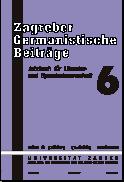
Grammatiken und Wörterbücher einheimischer Verfasser enthalten Ausspracheregeln, die eindeutig zeigen, dass in Kroatien eine österreichische, stark dialektal gefärbte Umgangssprache gelehrt und gesprochen wurde. Durch Unsicherheit in der Schreibung und Schreibvarianten wird die Existenz dieses österreichischen Deutsch auf kroatischem Boden bestätigt.
More...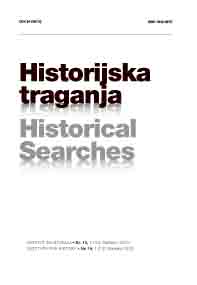
Keywords: Heresy; dualism; Cathars; Bogomils; Bosnian Church; Bosnian ‘Christians’; history; theology; Slavic studies; philosophy; religious studies; church history; transfer; High Middle Ages; Orient; Occident
In this paper, Manuel Lorenz examines the exchange of dualistic beliefs between Byzantium, the Balkans and Central Europe (11th-13th centuries). After a detailed analysis of sources, in the course of which various scientific paradigms are critically commented on and partially revised, he comes to the conclusion that a transfer of dualistic thoughts between East (Bogomils) and West (Cathars) is quite probable. Moreover, he elaborates that the group of Bosnian ‘Christians’, which has received varied and controversial assessments in the literature, was exposed only to insignificant influence of dualistic ideas – whether from East or West.
More...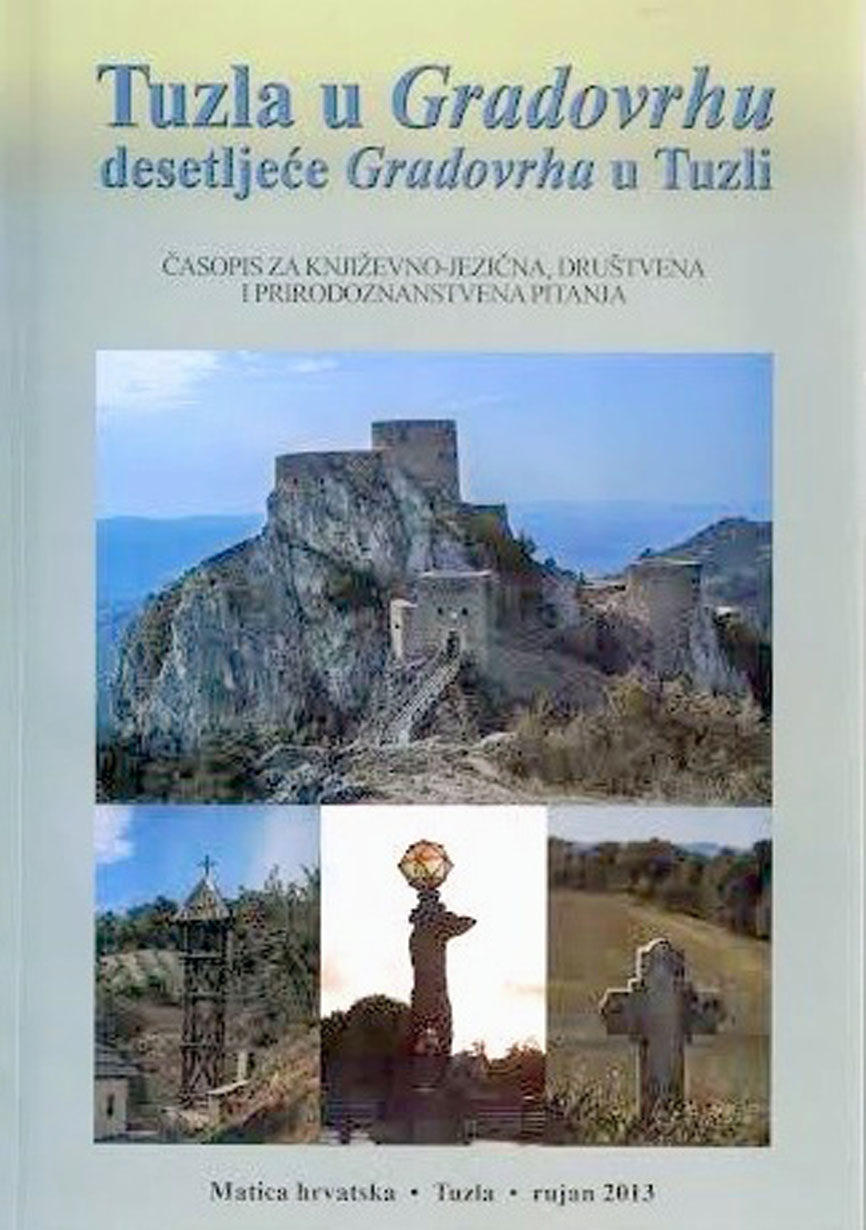
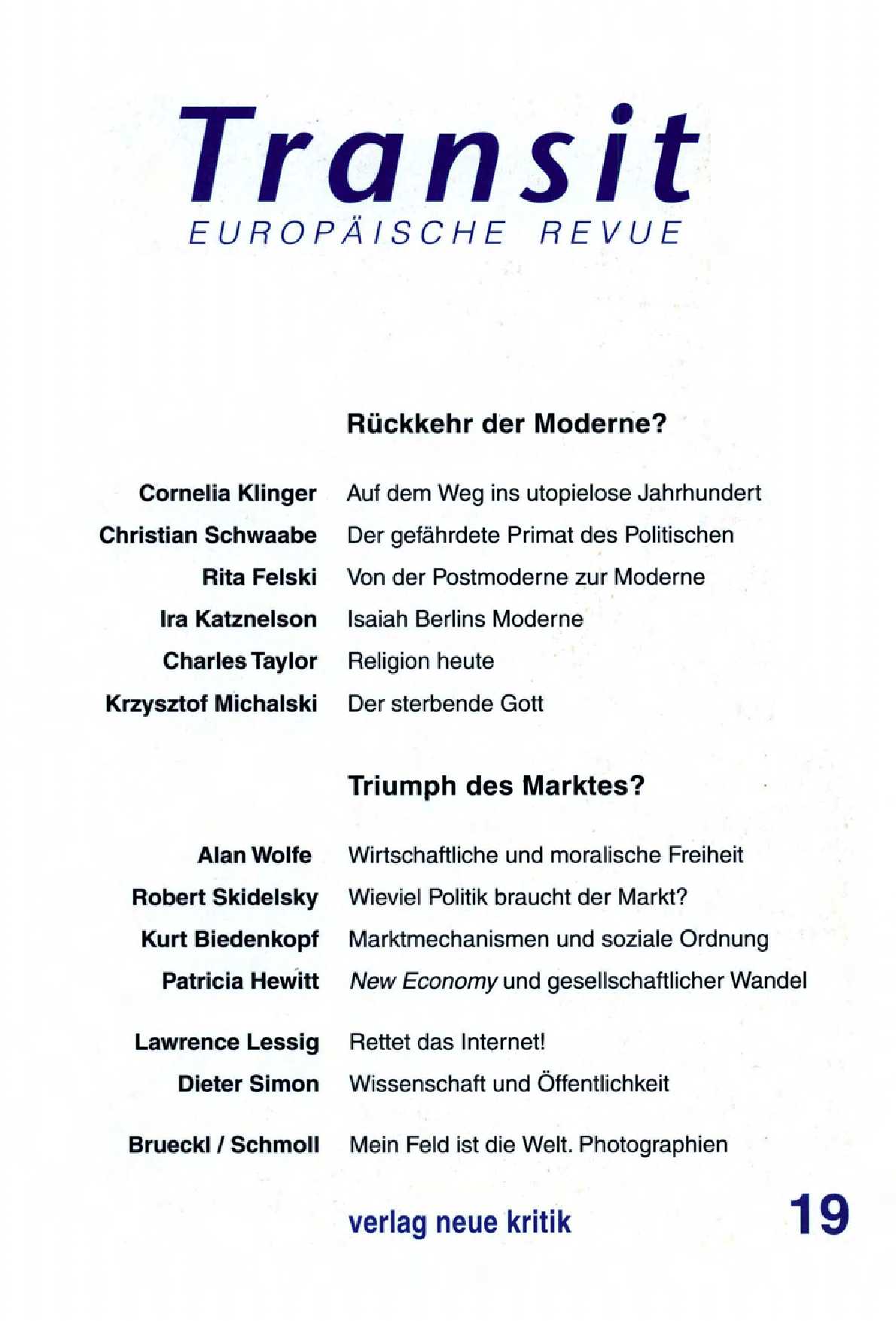
Keywords: Gott ;Moderne; Religion
Erinnern Sie sich der Geschichte über die letzten Momente des Sokrates, die Platon im Phaidon aufzeichnete? Darin berichtet Phaidon, einer der Freunde des Sokrates, seinem Bekannten Echekrates von seinem letzten Gespräch mit Sokrates. Thema der Diskussion ist der Tod. Es ist dies aber nicht eine Diskussion wie andere, denn während der Diskussion trinkt Sokrates das Gift, zu dem ihn die Mächtigen Athens verurteilt haben, und stirbt.
More...Keywords: innovation management; technical property rights; patent; utility model; technical innovation; open innovation; restrictions of technical protection rights;
The term innovation is used in many respects and has been evolving over the last decades. This paper mainly focusses on managing technical innovation and differentiates this kind of innovation from others. For managing technical innovation, this work applies technical property rights, patents and utility models. The opportunity to protect the companies’ technical knowledge legally is, apart from strategic measurements like trade secrecy, a very valuable tool to manage and commercialize innovation considering the shift from closed to rather open innovation. This paper discusses the applicability of legal protection measurements for the management of technical innovation containing a critical appraisal.
More...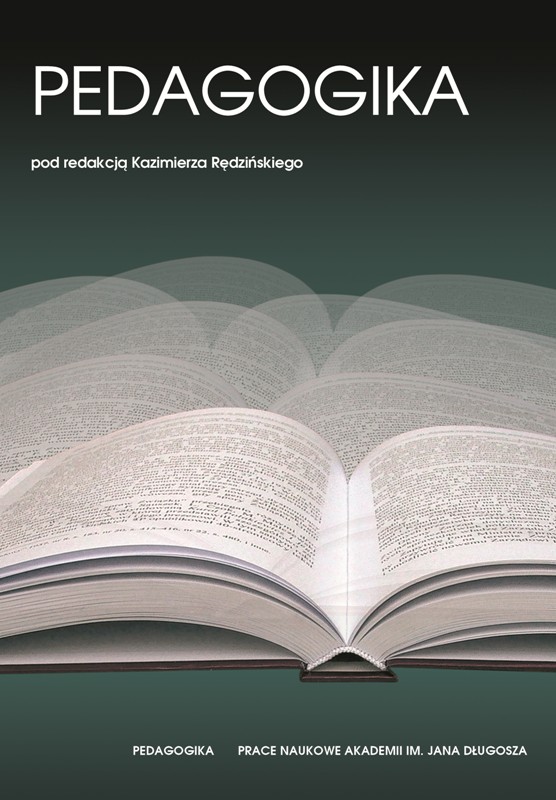
The article presents the origins and organization of the first state school in Tomaszow Mazowiecki. It was founded in 1880 under the conditions of Russian annexation. Its functioning was strictly dependent on the educational policy of Russians, which aim was Russifacation of Polish society. The author has described the budget, teaching staff, curriculum, textbooks, quantitative development of the school, teaching results and the main didactic and educational problems. The fate of the school has been shown on the background of education in the period of annexations. Kazimierz Rędziński has used previously unknown archival materials stored in the National Archives in Lodz.
More...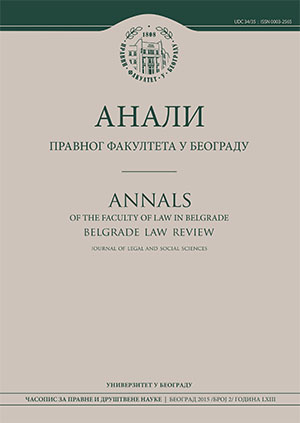
Keywords: Value Added Tax; Supply of Goods Free of Charge; Purchase Price; Cost Price; Non-business Purposes;
Consideration represents one of the cumulatively prescribed conditions for the taxation of supplies of goods in value added tax system. In the absence of consideration there is in general no basis for taxation, which makes room for untaxed final consumption – the case in which a taxpayer deducts input VAT on purchased good that is subsequently used for his own or another person’s final consumption free of charge. In this paper, the author analyzes the situations in which, for taxation purposes, the supplies of goods free of charge will be treated equally as supplies for consideration and, relying on the jurisprudence of the European Court of Justice, notes the deviations of the domestic practice from the communautaire one, while providing concrete recommendations for their elimination.
More...Keywords: Michel Beheim; Holy Roman Empire; Mehmed II; Ottoman Turks; Fall of Constantinople; 1453; crusading songs; propaganda; European nobility;
Michel Beheim, a prominent 15th-century German author and musical composer – who was at the Siege of Nándorfehérvár (1456) in the entourage of King Ladislaus V (the Posthumous) of Hungary – wrote one of the first song-poems in reaction to the Fall of Constantinople in 1453. Entitled Von den Türken und dem adel sagt dis, these verses, translated here into English for the first time, have previously been neglected in scholarship. Beheim’s perspective is particularly important, documenting as it does an emotional reaction to a defeat that spawned invective-filled rhetoric, crusading propaganda, castigation of the Christian nobility for a failure to come together, and an interpretation of the Turks under Mehmed II as a scourge of God. Beheim here, and in his subsequent body of anti-Turkish works, including his detailed depiction of the Crusade of Varna (1443 – 1445), contributes to the shaping of a late mediaeval and early modern negative Türkenbild.
More...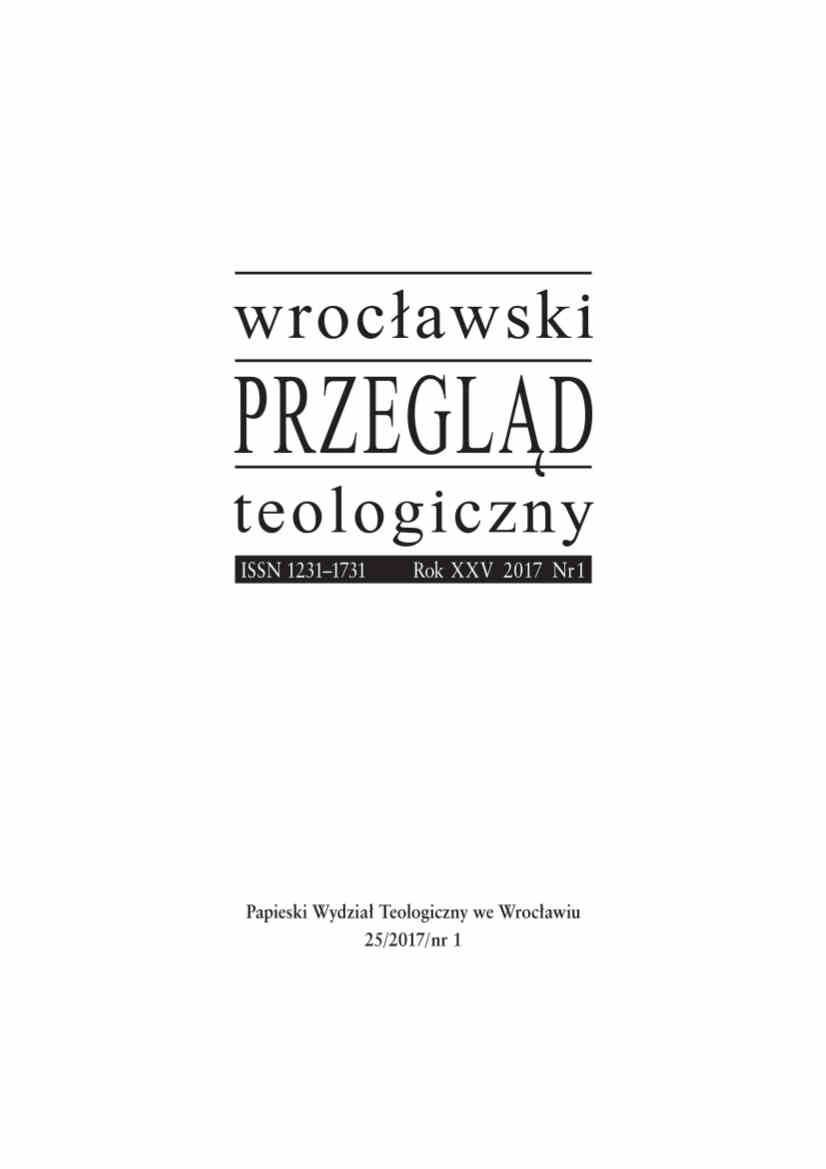
Keywords: Spirituality of Silesia;Silesian Lutheranism and its Representatives;Religious Hymns
The initial point of this article is a content of the hymnal “Das Schlesische Provinzial-Gesangbuch” (Breslau, sine datu) by the Silesian Lutherans. The historical and poetological analysis presented here on the one hand try to answer the questions how the Silesian authors expressed their religiosity and how the image of God and Jesus Christ was presented by them; on the other hand, it has to point to the common theological motives that are consist in these songs. The presented analysis is accompanied by the belief that music has an fundamental significance to the Christian faith and practice, as it was pointed out also in the treaty "Lob der Musik" by Martin Luther.
More...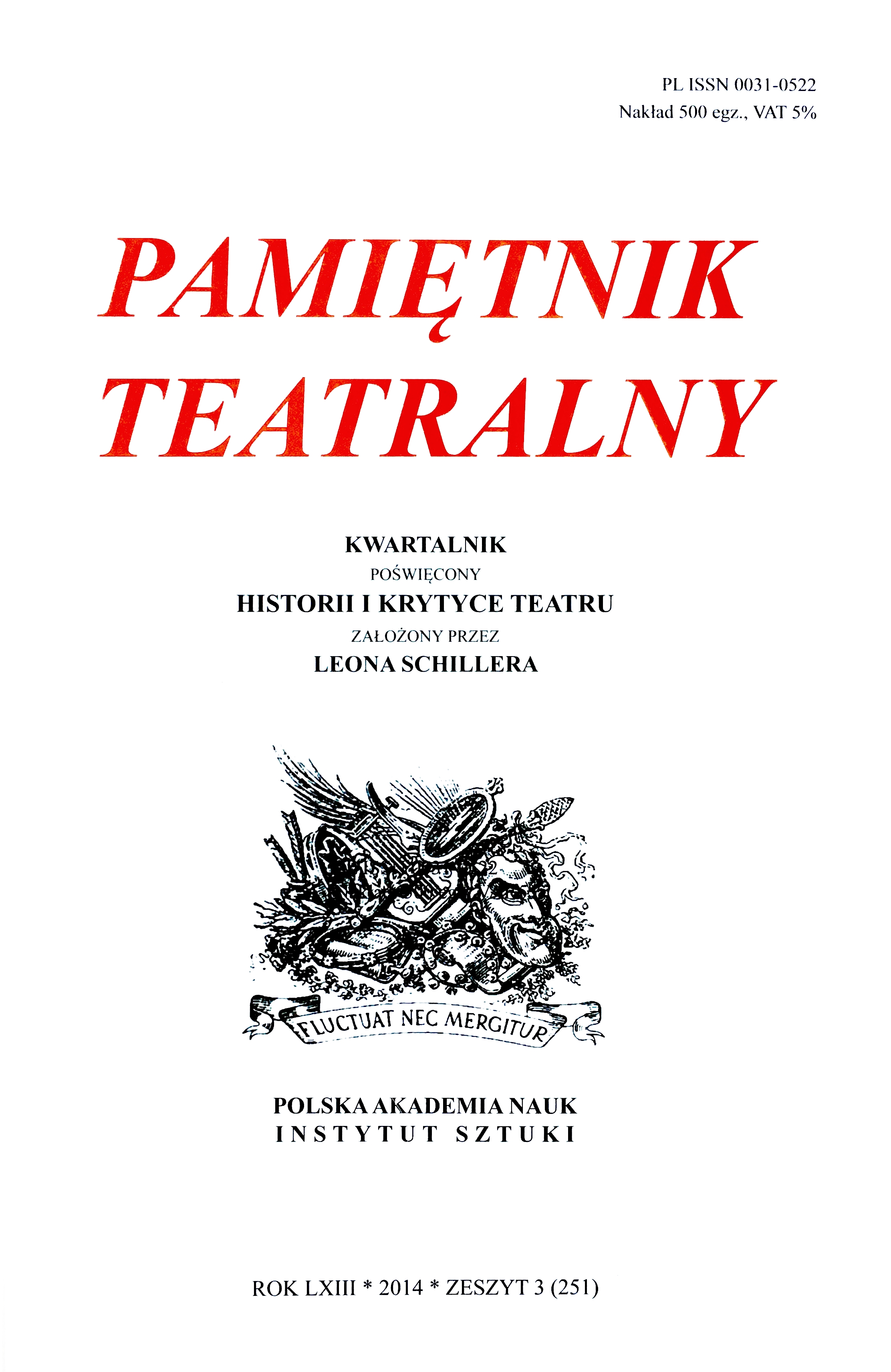
Keywords: Shakespeare;Max Reinhardt;
Plays by Shakespeare constituted an important and strong element of the repertories of Max Reinhardt’s theatres, perhaps the strongest apart from the Greek tragedies, German and European classics, and contemporary drama. Novelty of Reinhardt’s Shakespearean productions becomes apparent when juxtaposed with the German tradition of staging Shakespeare, i.e. with productions by Ludwig Schröder, Ludwig Tieck, Franz Dingelstedt, or Georg von Meiningen. In Reinhardt’s case, the reform in stage technique went hand in hand with a new definition of goals for theatre: it stopped being subservient to literature and came to be viewed as using literature only as a basis for its own works. The key innovation of this programme was to stage classical plays using modern aesthetics: ‘Thanks to the classics, new life flows onto the stage; its colours and music, its greatness and grandeur, its joy’, the German director proclaimed.Max Reinhardt staged fifteen plays by the English playwright, some of which he produced only once (e.g. The Tempest or Julius Caesar), twice or thrice (Macbeth, The Comedy of Errors, King Henry IV, Love’s Labour’s Lost, Much Ado about Nothing) whereas some he revisited numerous times, producing them on different stages that offered varied space conditions – these include As You Like It, The Merchant of Venice, and A Midsummer Night’s Dream especially. The 1913–14 Season at the Deutsches Theater saw the beginning of A Shakespearean Cycle [Shakespeare-Zyklus] that showed thirteen premiere and re-run productions in total. The article focuses on select productions of A Midsummer Night’s Dream: at the Neues Theater in Berlin on a box stage in 1905; at the Künstlertheater in Munich on a frieze stage in 1909; in the Nicolasee park in Murnau in 1910; at Klessheim in 1932, and at the Hollywood Bowl amphitheatre for the audience of 20,000 people in 1935. They show how, depending on what space conditions he had, Reinhardt changed his strategies of directing.
More...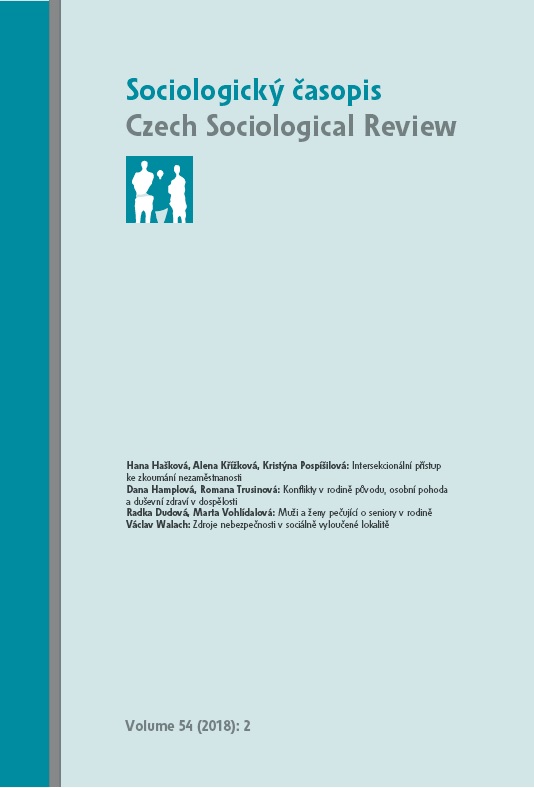
Keywords: elderly care; gender; family; intergenerational support; masculinities
Current data show that most elderly care in the Czech Republic, as well as worldwide, is provided by family members and in most cases women. Men also provide care, but they are less likely to do so, the intensity of the care they do provide is not as great, and the care activities they engage in are of a different type than those performed by women. This article seeks to answer two questions: What share of Czech women and men are caring for an elderly member in the family? Do the experiences of sons and daughters as caregivers differ? For this purpose the article presents a quantitative analysis of the Wave 5 of the SHARE 2013 dataset and a qualitative analysis of in-depth interviews with men and women caring for their frail elderly mother (and father). The results indicate that although the share of men providing some care in the CR is similar to the share of women, as carers men spend less time providing care, and they are more likely to care for their wife or partner than for other family members. Daughters are more likely to be the ones who provide care when an elderly parent needs more intensive help. Qualitative data indicate that when caring for their parents, men and women tend to ‘do gender’, if not in their care practices, then in their narrations of care. Men tend to provide care that is ‘good enough’ (instead of ‘the best’ care) and to use managerial and expert discourse when talking about care.
More...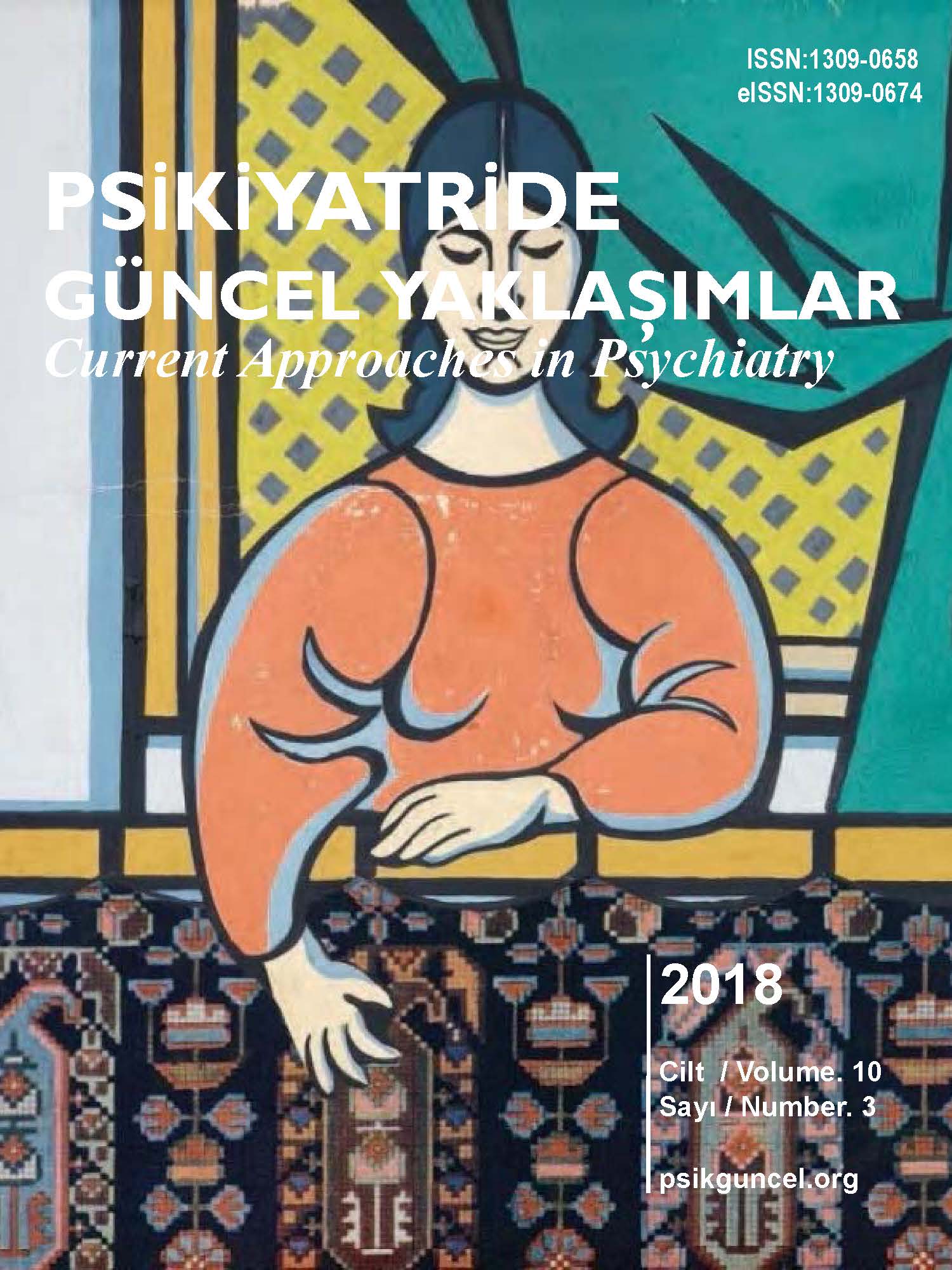
Keywords: anorexia nervosa; neural correlates;
The findings from neuroscience have shaped our understanding in the past decade regarding the way we perceive psychiatric illness. In addition to the more conventional theories that are based solely on the psychological and sociocultural factors to explain psychiatric disorders, there is growing evidence supporting a multifactorial etiology with genetic and neurological components. Anorexia nervosa, a life-threatening psychiatric disorder with relentless restrictive eating resulting in extremely low body weight, is one such illness that may be categorized as a brain disorder based on the recent findings. Although inconsistencies exist, several studies investigated the structural and the neurochemical alterations in the brain as well as the functional significance and the cognitive manifestations of these abnormalities in anorexia nervosa patient. This review aims to summarize the current literature on the neural aberrations and several treatment approaches targeting these abnormalities in anorexia nervosa.
More...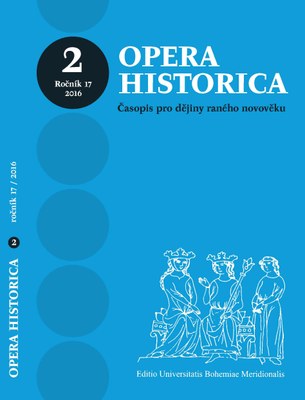
Keywords: Habsburgs; dynastic and military confraternities; archduke Leopold; Rudolf II
Archduke Leopold was a cleric, but he desired the title of emperor. This project met with the crisis of the Habsburg power, as Archduke Matthias, brother to Emperor Rudolf II, challenged his power. Archduke Leopold took advantage of this situation in order to install an own powerhouse and to change his family duty, supporting his brother Ferdinand in his pitch for the throne. Leopold switched his family-based confraternity to a confraternity of military parvenus, tried in the Turkish wars, but available then, as Archduke Matthias had met a ceasefire in 1606. This brass knew each other well and turned to Prague and Leopold for new opportunities. The alliance invaded Prague in 1611 and took half of the city, the rest was held by the estates. They called to Matthias and Leopold had to give up. The article is explaining confraternity, analysing the tremor of political possibilities before the thirty-years-war, and is also looking into the sources about the attack, showing how the story was told. Leopold changed his strategy afterwards. He tried to convince the family of his catholic faith and founded some projects, nowadays seen as steps to the ‘Pietas Austriaca’-myth. He succeeded and died in 1632 as ruler of Tirol.
More...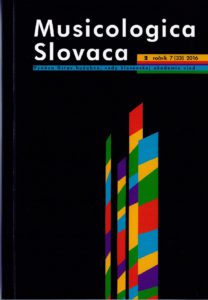
Keywords: history of music; Lutheran cantorate; musical education; musical culture in Spiš; I. Plorantius; J. Schimrack jun.;
The paper summarises the results of the most recent research on Lutheran Church cantorates in Spiš/Zips in the 16th and 17th centuries. Besides resolving questions of terminology, the author considers the genesis of the Lutheran cantorates (development of musical education, influence of Leonard Stöckel) and also analyses the activity of two urban cantorates (Levoča/Leutschau, Spišská Nová Ves/Neocomium, Iglo, Neudorff). Emphasis is placed on new findings connected with the existence of the religio-musical corporation Fraternitas Litteratorum in Spišská Nová Ves. Particular attention is devoted to transcriptions of the unique musical repertoire in the Spiš Lutheran cantorates and the Central European musico-cultural context.
More...Keywords: Foreigners; Czech Crown; Court; Court Accounts; Jagiello Dynasty; Late Middle Ages; Kingdom of Hungary;
The aim of the study is to present the potential of the surviving register of revenue and expenditure of the King of Hungary from 1494–1495 in relation to research on the personal composition of the royal court of Hungary and Bohemia. At the same time, emphasis was placed on the circle of persons from outside the Kingdom of Hungary. Analysis of the account material shows that after 1490, a group of people from the Czech Lands formed a group at the court in Buda that could not be overlooked. If we add to them identified courtiers of Polish – Lithuanian origin or with roots in the German regions of the Holy Roman Empire, they make up more than 60% of the people of noble origin, who gave colour to the court of King Vladislav Jagiello in Buda. A detailed prosopographical analysis of Vladislav’s court in the period 1490–1516 is still lacking. However, the partial analysis of the situation in in the mid 1490s shows that it was not just the Hungarian court with a not very important Bohemian appendix, but an institution fully representing both the Hungarian and Bohemian parts of Vladislav’s realms.
More...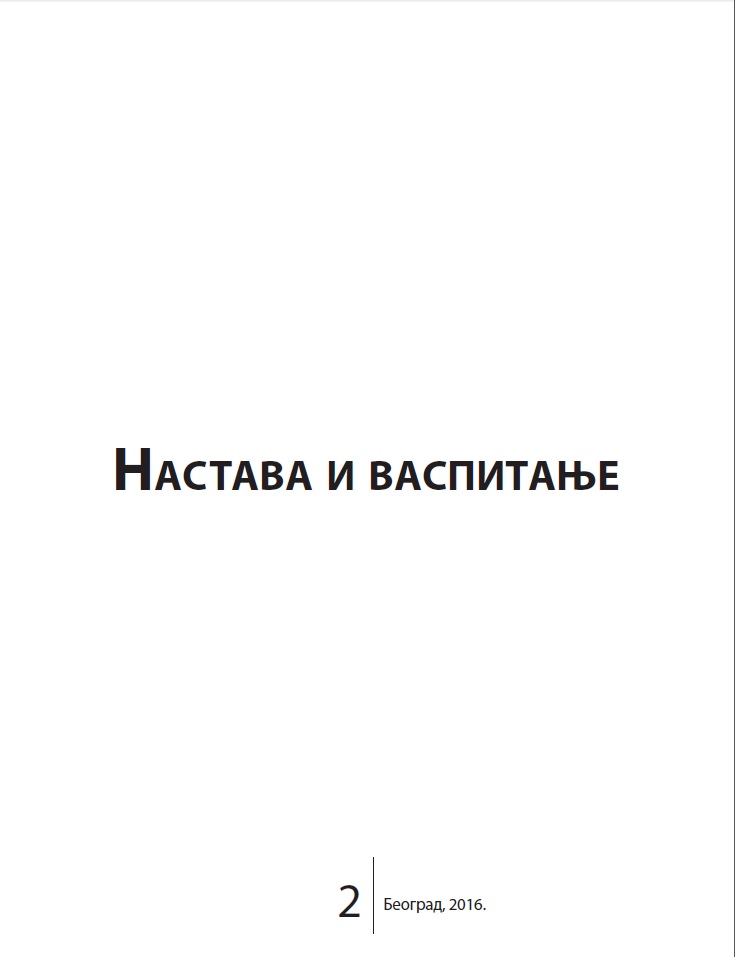
Keywords: student's achievement standards; class-teachers; subject-teachers; written lesson preparations;
Teachers are one of key factors of the realization and success of the reform processes in the education system. The paper reports about a research of the views of class- and subjectelementary-school teachers of the importance of defining, and the role of defined achievement standards, as well as their limitations. Also, it was examined to what extent teachers follow the defined standards when they prepare a written preparation for a lesson. The sample included 290 class- and subject-teachers and 51 written lesson preparations. According to the results obtained in the research it can be stated that there were certain differences in the teachers’ reports about the importance of defining students’ achievement standards as well as the frequency of defining and recording standards in written preparation of lessons: more than half teachers think that implementing standards in lesson preparations is important, a third of respondents think that it is very important to define achievement standards, but they were implemented in only two written lesson preparations. The results of this research can be useful both to teachers and education policy planners, since they show how important it is to include class- and subject-teachers in the reform processes and to give them a continuous support in implementing achievement standards as teaching regulators.
More...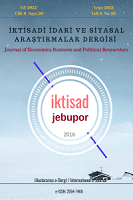
Keywords: International ethics; normative theory; IR theories; ethical/moral norms;
This study aims to map out the ways in which ethics (moral philosophy) and International Relations (IR) are converged around certain norms in the literature. Besides comprising communitarian and cosmopolitan norms and values in Normative IR Theory (Normative Theory) in which the two academic disciplines are congregated, this mapping tries to display that certain norms in some critical theories has tangible ethical meanings as well. Thus, it can be claimed that ethics in IR has in fact larger intellectual and theoretical dimensions. Accordingly, “community/state” which is one of the ethical norms and driving force of political acts and attitudes in Normative Theory put forward by communitarianism, and the other one which is “universal right” in cosmopolitanism are discussed at first. Then, the “class” norm of Marxism, the “race” norm of Postcolonialism, the “gender” norm of Feminism and the “environment” norm of Green Theory which are asserted as the determiners of policies and actions, are treated within the context of ethics. In conclusion, it is exhibited that international ethical studies cannot be bounded with Normative Theory.
More...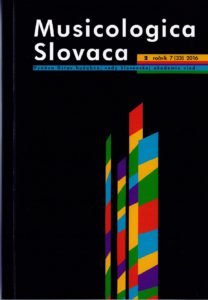
Keywords: broadside ballad; church hymn; Lenten period; hymnbook; oral tradition
Mutual influence and overlap of church and broadside Lenten songs in Slovak manuscript and printed sources from the 18th to the 20th century and in oral tradition. The historical layers of Lenten broadside songs (broadside ballads) and their genre variants, in relation to literary and musical style. Hagiographic and Passion epic songs, and their connection with medieval hymnography. The Passion lament and the Passion private lyric; their central status in the Baroque style layer of Lenten songs. Lenten songs with a didactic purpose, and their connection with the era of Enlightenment absolutism. The problem of the free relation between melody and text in Lenten songs and the relativity of style unity in their textual and musical components.
More...